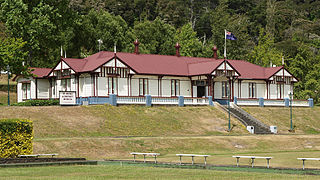
Te Aroha is a rural town in the Waikato region of New Zealand with a population of 3,906 people in the 2013 census, an increase of 138 people since 2006. It is 53 km (33 mi) northeast of Hamilton and 50 km (31 mi) south of Thames. It sits at the foot of 952 metres (3,123 ft) Mount Te Aroha, the highest point in the Kaimai Range.
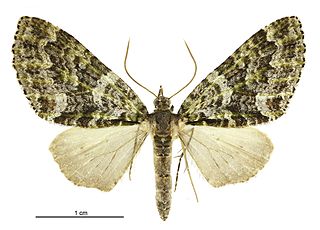
Tatosoma is a genus of moths in the family Geometridae first described by Arthur Gardiner Butler in 1874. The species in this genus are found only in New Zealand.

Asterivora fasciata is a species of moth in the family Choreutidae. It is endemic to New Zealand and has been found at Arthur's Pass. The larvae of this species have been reared on Celmisia densiflora and adults are on the wing in January.
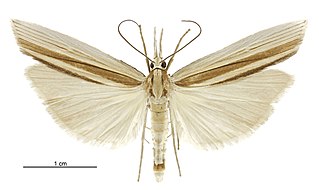
Orocrambus angustipennis is a species of moth in the Crambinae family. It is endemic to New Zealand. O. angustipennis is present in the North Island, South Island and the Chatham Islands.
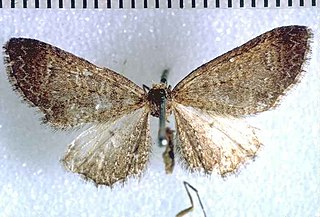
Pasiphila acompsa is a moth in the family Geometridae. It was described by Louis Beethoven Prout in 1927. It is endemic to New Zealand and has been observed in mountainous locations in both the North and South Islands. Larvae of this species have been reared on plants within the Veronica genus. Adults are on the wing from December to February.

Physetica prionistis is a moth of the family Noctuidae. It was described by Edward Meyrick in 1887. It is endemic to New Zealand and is widespread throughout the North, South and Chatham Islands. This species can be found in open clearings of shrubland and forest at altitudes from sea level up to the alpine zone. Adults are on the wing throughout the year and are attracted to sugar traps and occasionally to light. The life history of this species is unknown as are the larval host species.

Charixena iridoxa, also known as the Astelia zig-zag moth, is a moth of the family Plutellidae. It was first described by Edward Meyrick in 1916. This species is endemic to New Zealand and has been observed in the North, South and Stewart Islands. The life cycle of this moth is at least two years in length with the larvae inhabiting the bulb of its host plants and mining the underside of its leaves. These mines have a distinctive zig-zag appearance and can be easily recognised when looked for on the host plants. The larvae pupate in a cocoon attached to the leaf and this stage takes place between February and August. The adult moths emerge in the early spring and are fast, day flying moths. Their larval hosts are plants in the genus Astelia and include Astelia fragrans and Astelia nervosa.
Merlin Owen Pasco was a New Zealand entomologist. Pasco discovered several species of moth previously unknown to science and collected numerous specimens.

Pseudocoremia lutea is a species of moth in the family Geometridae. It is endemic to New Zealand. It is classified as "At Risk, Naturally Uncommon" by the Department of Conservation.

Eschatotypa halosparta, also known as the salt and pepper fungus moth, is a species of moth in the family Tineidae. It was described by Edward Meyrick in 1919 from a specimen collected by George Vernon Hudson at Wainuiomata in December. This species is endemic to New Zealand. This species has also been collected near the Tui Mine in Te Aroha.

Mallobathra is a genus of moths belonging to the family Psychidae, and are bagworm moths. This genus was first described by Edward Meyrick. It is endemic to New Zealand. The type species of this genus is Mallobathra crataea.
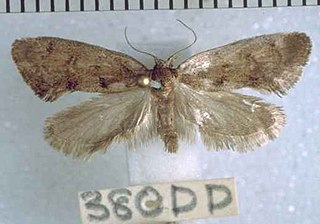
Tingena ombrodella is a species of moth in the family Oecophoridae. It is endemic to New Zealand and has been observed in the North and South Islands. Adults of this species are on the wing from November to January and the larvae of the species are litter feeders. This species has been found to inhabit native beech forest.

Meterana merope, also known as the Patē Owlet, is a species of moth in the family Noctuidae. This species is endemic to New Zealand. The larvae of this species feed on pāte.
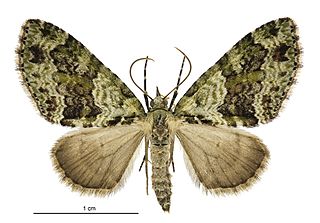
Tatosoma alta is a species of moth in the family Geometridae first described by Alfred Philpott in 1913. It is endemic to New Zealand.
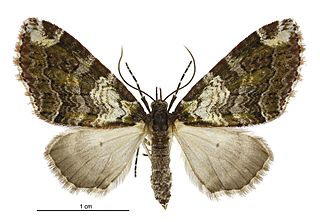
Tatosoma apicipallida is a species of moth in the family Geometridae first described by Louis Beethoven Prout in 1914. It is endemic to New Zealand. The larval host plant of this species is unknown. It has been found from Mount Te Aroha southwards.
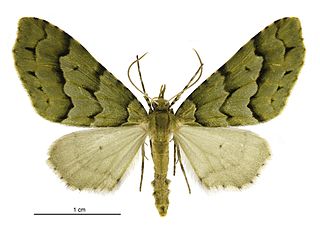
Tatosoma lestevata is a species of moth in the family Geometridae first described by Francies Walker in 1862. It is endemic to New Zealand.
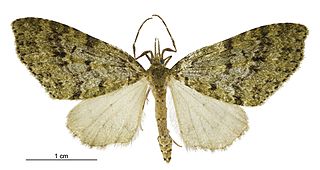
Tatosoma monoviridisata is a species of moth in the family Geometridae first described by Charles E. Clarke in 1920. It is endemic to New Zealand.
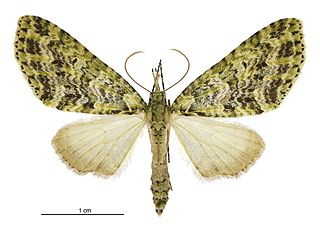
Tatosoma tipulata is a species of moth in the family Geometridae first described by Francies Walker in 1862. It is endemic to New Zealand.
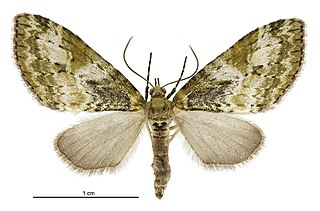
Tatosoma topea is a species of moth in the family Geometridae first described by Alfred Philpott in 1903. It is endemic to New Zealand.

Tatosoma transitaria is a species of moth in the family Geometridae first described by Francies Walker in 1862. It is endemic to New Zealand.




















